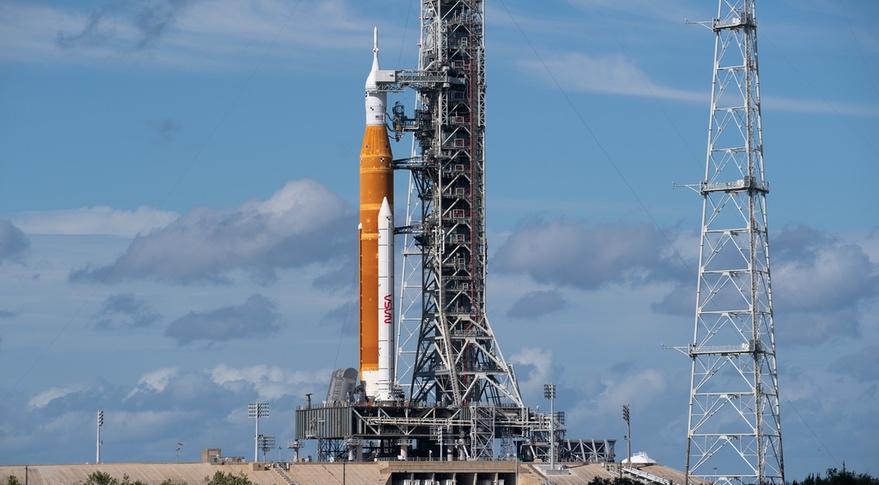The SLS rocket received minimal damage from hurricane Nicole. Specialists are already engaged in restoring equipment and are confident that the Artemis I mission will start on the morning of November 16.

SLS survived the hurricane with minimal damage
NASA experts report that, despite all the troubles, the Artemis I mission should begin at 8:04 a.m on November 16, GMT+2. The giant SLS rocket installed on the launch pad survived hurricane Nicole on November 4 and is now being prepared for launch.
Earlier, experts expressed serious concerns that the launch of the first mission under the Artemis program would once again have to be postponed. This time — at least until December. Solid-fuel accelerators are running out of expiration date.
In addition, it was previously reported that the hurricane caused damage to the structure. After all, the wind had not much lower speed than the one at which, in accordance with safety standards, exists the threat of falling or destruction of the rocket.
However, the specialists decided not to bring the SLS back to the VAB, because it takes too much time. Thanks to this, it was possible to shift the start date not to November 19, but only to 16.
What specialists will restore on SLS
In fact, the damage to the carrier and the launch complex turned out to be insignificant. The wind damaged the anti-rain casing on one of the accelerators, and it was uncritically flooded with water. In addition, it had to be bailed out of the bracket by which the crew would have boarded if the mission had been manned.
The ruptures of two cables turned out to be more serious. The first connects the Orion spacecraft to the launch mast. The second was attached to the tail service rod. However, replacing both of them is not a problem for specialists.
However, technical troubles and weather, as well as last time, can interfere with the launch. In this case, NASA still has reserve days on November 19 and 25. If the mission is successful, then the next time the SLS should deliver astronauts to the orbit of the Moon.
According to spacenews.com
Follow us on Twitter to get the most interesting space news in time
https://twitter.com/ust_magazine

